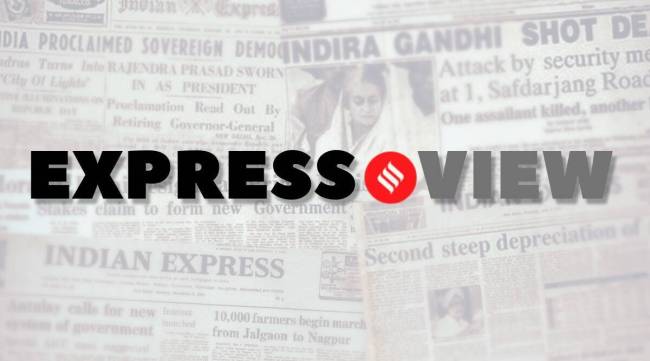Opinion Express view: Withdrawal of Rs 2,000 note creates dislocation in economy
This decision revives echoes of the 2016 demonetisation, creates dislocation in the economy for reasons that remain mostly obscured from public view
 Both government and RBI must address apprehensions that, six and a half years later, few lessons have been learnt.
Both government and RBI must address apprehensions that, six and a half years later, few lessons have been learnt. In a decision that revives echoes of the November 8, 2016 decree, the Reserve Bank of India on Friday announced withdrawal of the Rs 2,000 denomination note from circulation. There are two noticeable departures from demonetisation in 2016. One, these notes will continue to remain legal tender. And two, people have been allowed a four-month window ending on September 30 to either deposit or exchange the Rs 2,000 note. Technically, therefore, this may not be considered demonetisation — there is little clarity, also, over the status of these notes on October 1. But this decision only reinforces the view that the introduction of the Rs 2000 note directly contradicted the claims made at the time by the government that demonetisation of Rs 500 and Rs 1,000 notes was a well thought out, effective and permanent strike against black money.
From an operational perspective, Friday’s decision seems unnecessary. As per the RBI’s annual report, no fresh Rs 2,000 notes have been supplied by the printing presses in the past few years. And as the disposal of soiled notes has been steadily increasing, this note was in effect losing its share in the larger economy. In 2019, the Rs 2,000 note accounted for 31.2 per cent of the value of all notes in circulation. By 2022, it had fallen to 13.8 per cent. And by the end of March 2023, it had fallen further. This implies that over time the share of this high denomination note would have fallen further, and as the numbers of soiled notes rose, it could have been slowly phased out of circulation without causing disruption to the system and inconvenience to the public. The RBI, in its wisdom, has stipulated that the exchange of the Rs 2,000 note cannot exceed Rs 20,000 at a time — hopefully, it has made provisions of lower denomination notes in banks for the exchange. There may be a pattern here of disruptive policy moves that raise concerns of transparency and of costs outstripping the presumed benefits. The recent decision to include international credit card transactions under the liberalised remittance scheme, attracting a higher rate of tax collected at source, fits this pattern.
Such decisions raise more questions than answers and shine unflattering light on policy-making in the fifth largest economy in the world. In 2016, demonetisation was announced by the prime minister. On Friday, it was the RBI that communicated the decision. Both government and RBI must address apprehensions that, six and a half years later, few lessons have been learnt.





